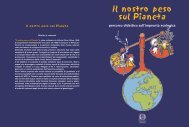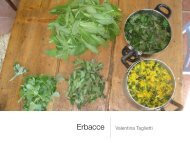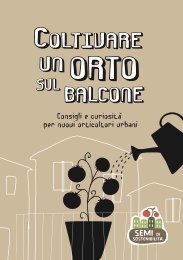Myanmar Protected Areas: Context, Current Status ... - Istituto Oikos
Myanmar Protected Areas: Context, Current Status ... - Istituto Oikos
Myanmar Protected Areas: Context, Current Status ... - Istituto Oikos
You also want an ePaper? Increase the reach of your titles
YUMPU automatically turns print PDFs into web optimized ePapers that Google loves.
KYAIKHTIYOE<br />
Site ID 15<br />
Locality Mon State, Kyaikhto Township<br />
Coordinates N17° 28’, E97° 05’<br />
Size (km²) 156<br />
Altitude (m. asl) 50 -1,090<br />
<strong>Myanmar</strong> category Wildlife Sanctuary<br />
IUCN category IV<br />
Site Governance Nature and Wildlife Conservation Division<br />
Boundaries Demarcated<br />
Year gazetted 2001<br />
Protection level Partial<br />
Main purposes Conservation<br />
Habitat<br />
Evergreen Forest (Typical), Mixed Deciduous Forest<br />
(Moist Upper)<br />
Key resources Leopard, Serow, Red Goral, Tiger<br />
Legend of topographic maps<br />
Head Quarters<br />
Ranger Post<br />
Towns<br />
<strong>Protected</strong> <strong>Areas</strong><br />
State/Region Boundaries<br />
Roads<br />
Water areas<br />
Rivers<br />
Elevation<br />
5.800 m. asl<br />
0 m. asl<br />
Legend of satellite maps<br />
Water Depth Vegetation Density<br />
Deep<br />
Shallow<br />
High<br />
Low<br />
SITE DESCRIPTION<br />
The site was proposed as Wildlife Sanctuary in 1998 and<br />
gazetted in 2001 in order to conserve the flora and fauna<br />
of the surroundings of Kyaikhtiyoe Pagoda which is a<br />
National Heritage monument. The Kyaikhtiyoe Pagoda<br />
is built on a spectacular geological rock formation and<br />
has become a site of worship. The rock is a massive stone<br />
close to the top of the mountain and on the brink of a<br />
cliff. Now the rock has been covered by the golden leaves<br />
left by the Buddhist pilgrims and it is called the Golden<br />
Rock Pagoda.<br />
NATURAL RESOURCES<br />
The wildlife sanctuary was established to protect globally<br />
threatened species (Leopard, Serow, Goral).<br />
Leopard is still spotted in the wildlife sanctuary while<br />
there is no other recent available information on the<br />
presence of other species in the Sanctuary.<br />
MANAGEMENT<br />
An annual operation plan is present. According to Park<br />
staff, more patrolling and inspecting is needed.<br />
STAFF / RESOURCES<br />
Some staff is present (1 Park Warden, at least 2 rangers<br />
and 2 more foresters), but it is not sufficient: more<br />
administrative and field staff are needed. Only the Park<br />
Warden has received specific environmental training by<br />
Forest Department and local NGOs. The IT skills are low<br />
and digital equipment is required. One Park Office and 4<br />
Ranger Posts are present.<br />
TOURISM<br />
The Kyaikhtiyoe Pagoda on the Golden Rock (Golden Rock<br />
Pagoda) is considered one of the most famous tourist<br />
spots of <strong>Myanmar</strong> and is visited every year by thousands<br />
of pilgrims and tourists, especially during pagoda festival.<br />
Many facilities are present for tourists (hotels, restaurants<br />
and transport, etc.). A 15-km-long road crosses was built<br />
inside the sanctuary to take the pilgrims to the pagoda<br />
with trucks. Private vehicles are not allowed.<br />
<strong>Myanmar</strong> <strong>Protected</strong> <strong>Areas</strong><br />
46 47<br />
THREATS<br />
• Hunting & Collecting Terrestrial Animals<br />
• Logging & Wood Harvesting<br />
• Fire & Fire Suppression<br />
The main dangers to the area are the illegal logging of<br />
bamboo and poles for housing and working tools, and the<br />
poaching of the protected populations of Barking Deer<br />
and Wild Boar for subsistence by local hunters. Forest fires<br />
during the dry season are becoming a serious threat.<br />
RESEARCH<br />
Yangon university studied orchids and ferns (2005) and<br />
bamboo rats (2008). A bird survey was implemented by<br />
local NGO <strong>Myanmar</strong> Birds and Nature Society (2008) and<br />
an herpetology survey by CAS (2008).<br />
LAND USE AND HUMAN ACTIVITIES<br />
INSIDE<br />
• Recreation<br />
The site is highly used for the tourist activities<br />
and facilities.<br />
OUTSIDE<br />
• Agricultural production (Temporary and Permanent<br />
cropping)<br />
• Forestry (Forest Plantation)<br />
Apart from tourism, there are many agricultural activities,<br />
for subsistence (with crops like rice, peanuts, pepper and<br />
durian) and commercial rubber forest plantations






